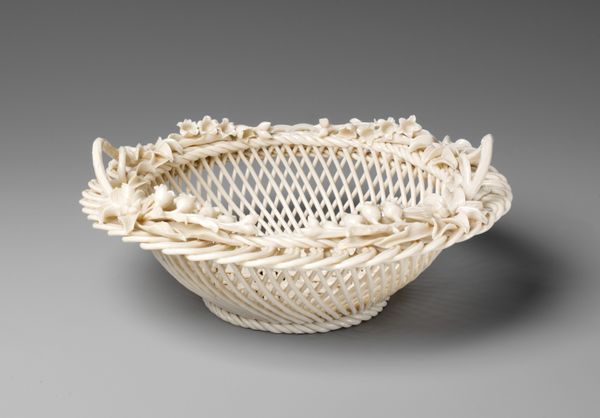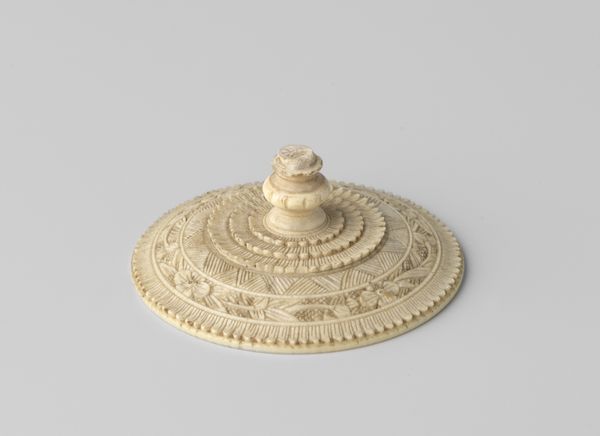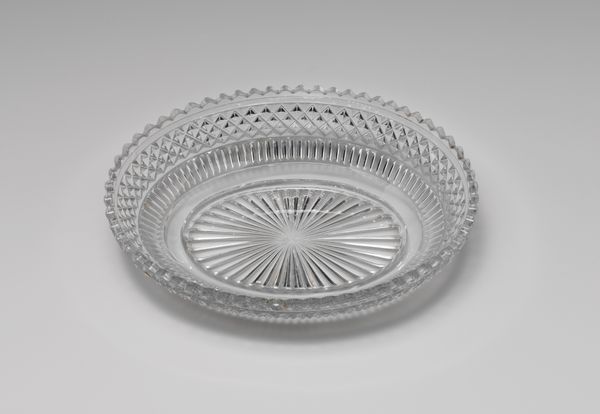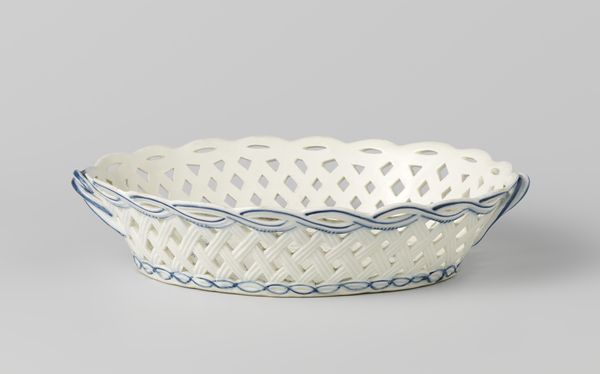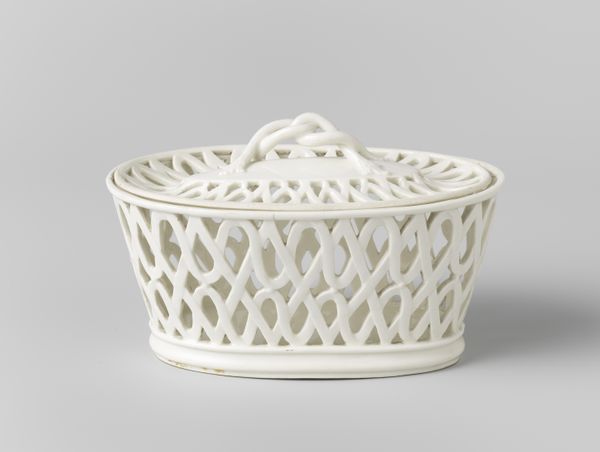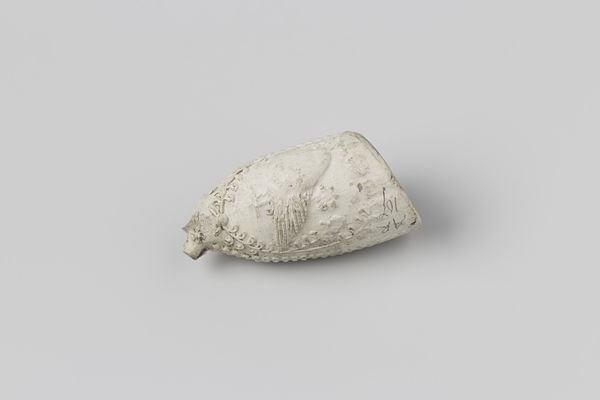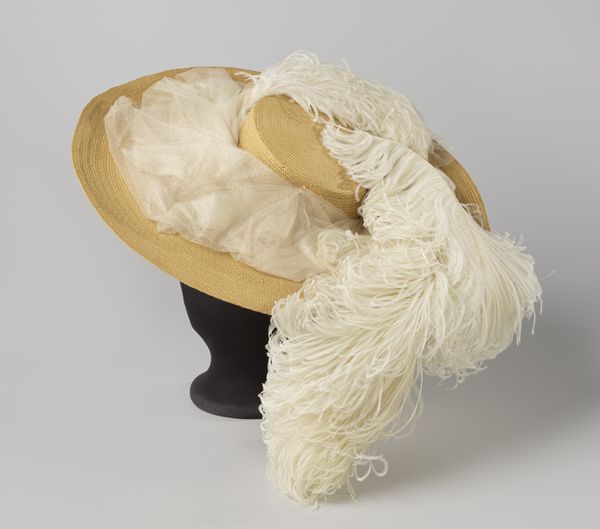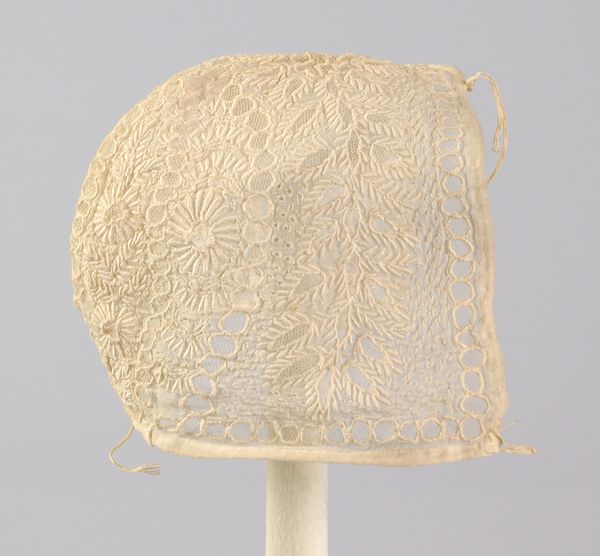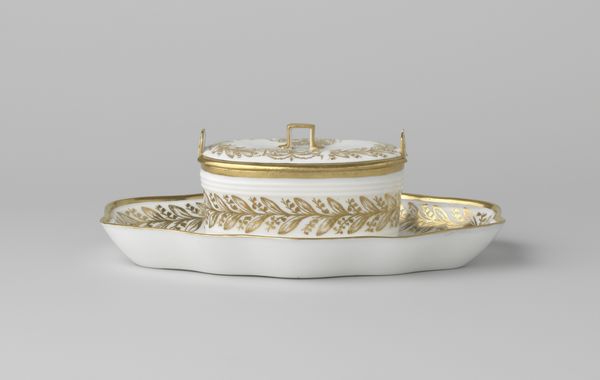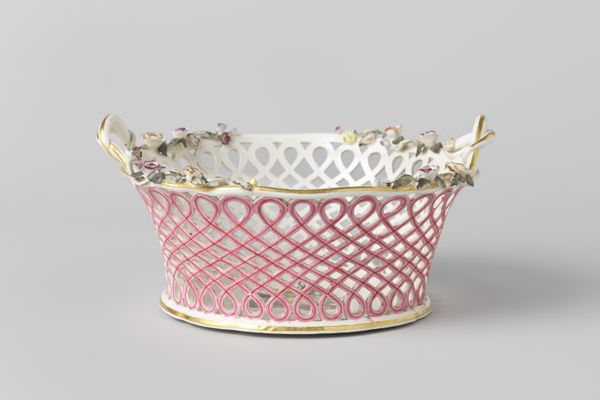
Dienstbodenmutsje van tulen gaas, bestaande uit plat ovaal middenstuk omgeven door een driedubbele, gerimpelde rand c. 1910 - 1920
0:00
0:00
mixed-media, textile
#
mixed-media
#
art-nouveau
#
textile
#
decorative-art
Dimensions: length 16.5 cm, width 14 cm
Copyright: Rijks Museum: Open Domain
Curator: What a delicate thing! The arrangement of these ruffled, pale borders suggests the lightness and impermanence of the most decorative finery. Editor: Indeed. What you’re seeing is a cap—"Dienstbodenmutsje van tulen gaas, bestaande uit plat ovaal middenstuk omgeven door een driedubbele, gerimpelde rand"—that translates to something like “maid's cap of tulle mesh, consisting of a flat oval center piece surrounded by a triple, ruffled edge.” It was made sometime between 1910 and 1920. Curator: So, a symbol of service. I see something profoundly poignant in its craftsmanship, transforming the necessary into an artform. Consider its role, representing a particular social class, or better, a place within the larger class structure that the ruling class doesn't want you to notice. The Art Nouveau influence, those organic, flowing lines translated into textile, is also telling, isn't it? The politics of the domestic sphere, right here. Editor: Absolutely. Formally, the layering, the gradations of opacity, the subtle play of light and shadow...it all suggests an almost sculptural presence. And observe the way the ruffled edge catches the light—pure texture creating complex geometries. Curator: Beyond the aesthetic, imagine the hands that crafted it, the societal expectations it embodied. It is a testament to labor, a quiet protest against anonymity perhaps. We can sense the economic inequalities it represented at that moment, during an entire period of cultural ferment and political reformation. Editor: But shouldn't we admire the simple, intricate beauty? The texture draws the eye, doesn't it? And that repetition—a simple motif elegantly varied...it approaches the sublime. Curator: And isn't this contrast exactly why such "minor" arts deserve more of our attention? To see class and gender at work in what might seem a trivial object? Editor: Point taken. I suppose what strikes me most now is how its meticulous detail, on closer inspection, resists any easy reading. Its cultural associations pull one way, while the aesthetic construction of the piece, understood for its own qualities, invites the other way around. Curator: Yes, it exists at that intersection—both burden and beauty. Editor: Exactly, that intersection creates something of profound historical interest for viewers of our present moment.
Comments
No comments
Be the first to comment and join the conversation on the ultimate creative platform.

